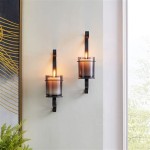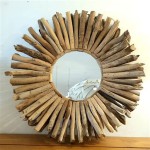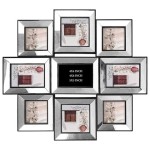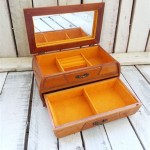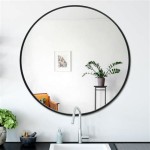How to Remove Black Mirror Glue from Walls
Removing adhesive residue from walls can be a challenging task, particularly when dealing with the strong adhesive often used for mounting mirrors. This article provides a comprehensive guide on how to effectively remove black mirror glue from walls without causing damage to the underlying surface. The methods outlined below cater to various types of wall surfaces and adhesive strengths.
Understanding the Adhesive
Before attempting removal, it is crucial to understand the type of adhesive used. Most black mirror adhesives are either a construction-grade silicone or a modified epoxy. Silicone adhesives are generally more flexible and can be removed with solvents. Epoxy adhesives are stronger and may require mechanical removal methods. Identifying the adhesive type will help determine the most effective removal strategy.
Preparing the Work Area
Protecting the surrounding area is essential. Lay down drop cloths or old newspapers to catch any debris or cleaning solutions. Adequate ventilation is important, especially when using chemical solvents. Open windows and doors to ensure proper airflow. Wear gloves to protect hands from adhesives and cleaning agents. Safety glasses are also recommended to prevent eye irritation from debris.
Method 1: Applying Heat
Heat can soften many types of adhesives, making them easier to remove. A hairdryer or heat gun can be used for this purpose. Direct the heat towards the adhesive, keeping the heat gun or hairdryer moving to prevent scorching the wall. Test a small, inconspicuous area first to ensure the heat doesn't damage the wall's finish. Once the adhesive is softened, carefully scrape it away using a plastic scraper or putty knife.
Method 2: Using Solvents
Several solvents can effectively dissolve mirror adhesive. Isopropyl alcohol (rubbing alcohol), mineral spirits, and specialized adhesive removers are common options. Apply the solvent to the adhesive using a cotton ball or cloth. Allow the solvent to dwell for several minutes to penetrate the adhesive. Test the solvent on an inconspicuous area first to ensure it doesn't damage the wall's finish. Once the adhesive has softened, gently scrape it away. For stubborn residue, reapply the solvent and allow it to dwell longer.
Method 3: Employing Mechanical Removal
For particularly stubborn adhesives, mechanical removal may be necessary. A razor blade scraper or a putty knife can be carefully used to scrape the adhesive off the wall. Extreme caution should be exercised to avoid scratching the wall surface. Hold the blade at a shallow angle to minimize damage. This method is best suited for durable wall surfaces like tile or metal. For painted walls, this method carries a risk of removing paint along with the adhesive.
Method 4: Utilizing Adhesive Removal Products
Several commercial adhesive removal products are specifically designed for removing stubborn adhesives. These products often come in a gel or spray form and can be applied directly to the adhesive. Follow the manufacturer's instructions carefully. Some adhesive removers may require dwelling time before the adhesive can be scraped away. Test the product in an inconspicuous area first to ensure compatibility with the wall surface.
Method 5: Combining Heat and Solvents
For the toughest adhesive residues, combining heat and solvents can prove highly effective. First, apply heat to soften the adhesive. Then, apply a suitable solvent. The combination of heat and solvent can break down the adhesive more effectively than either method alone. Be mindful of the potential flammability of some solvents when used in conjunction with heat.
Cleaning the Wall Surface
Once the adhesive has been removed, clean the wall surface to remove any remaining residue. A mild soap and water solution is typically sufficient. For stubborn residue, a specialized cleaning product designed for adhesive removal can be used. Ensure the wall is thoroughly dry before repainting or applying any new wall coverings.
Preventing Future Adhesive Issues
When mounting mirrors or other items using adhesive, consider using removable adhesive strips or hooks. These products offer a secure hold while allowing for easy removal without leaving residue. If using permanent adhesive is necessary, apply painter's tape around the edges of the mounting area to create a barrier between the adhesive and the wall. This will make future removal significantly easier.
How To Remove Tar Like Adhesive On Drywall After Removing Mirror Diy Home Improvement Forum

How To Remove Black Mastic From The Walls Hometalk

Remove Adhesive Black Mastic From Back Of Mirror

How To Safely And Easily Remove A Large Bathroom Builder Mirror From The Wall Site Title

How To Remove A Mirror Glued The Wall Forbes Home

How To Repair Wall After Mirror Glue Removal Diy Drywall Tips

How To Repair Wall After Mirror Glue Removal Diy Drywall Tips

How To Remove A Mirror Glued The Wall With Mastic

How To Remove A Wall Mirror Diy Weekend Project Rustic Mirrors Black

How To Repair Wall After Mirror Glue Removal Diy Drywall Tips

